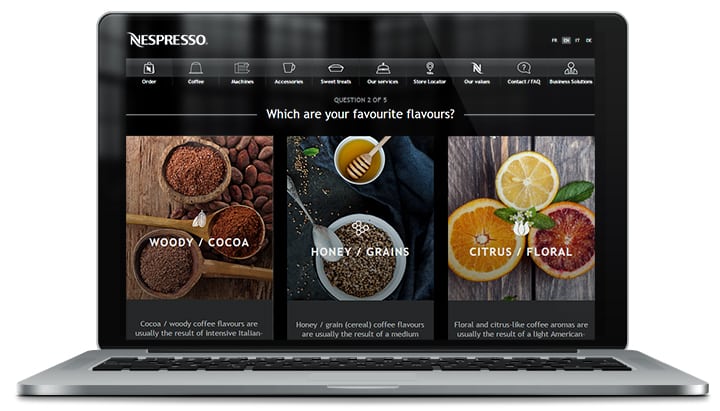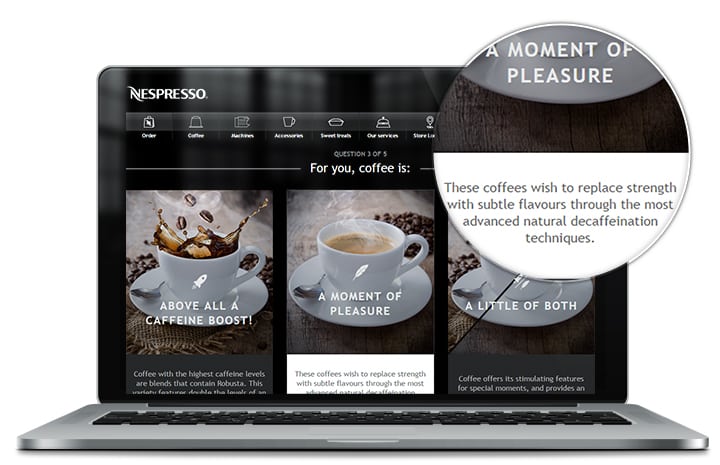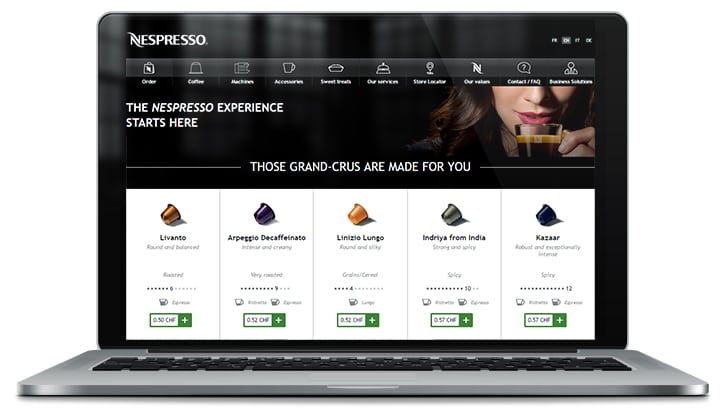Today, consumers are confronted with more options and more touch points than ever. It is all too easy for them to experience decision fatigue, basically giving them 3 options to either …
- Give up and abandon their digital carts because their needs aren’t being met along a purchase path
- Pick something up without giving it much thought and risking dissatisfaction with the purchase
- Pass the decision-making responsibility to someone else.
Given the overwhelming number of options consumers are faced with today, they want to feel in control – from discovering a new product to making a purchase decision.
You have to give your customers enough choice so they can feel in control. But not so much that they feel that making a decision is nearly impossible or bears a high risk of getting it wrong. Guided Selling allows retailers and brand manufacturers to make it easy for consumers to stay in control, manage their options, and arrive at more confident purchase decisions.
How Guided Selling works
Similar to a knowledgeable sales associate who is available 24/7, Guided Selling solutions listen to shoppers first to understand their needs, educate and inform them about product benefits and features, and suggest products that match their specific needs.
Here you can check out several guided selling examples at diverse retailers and brands.
1. Understand consumer needs
Guided Selling solutions engage users in a need-oriented, interactive dialogue and asks them a few questions about their preferences, wants, and haves to discover apparent and latent consumer needs.
This approach is a great way for you to understand the factors that matter to your customers and create a more personalized experience that last beyond the moment of purchase

2. Sell on value, rather than price
Guided Selling solutions can integrate contextualized information to help users understand the full impact of their choices and further assist them in their decision-making process.
By eschewing the dizzying technical jargon often found in product descriptions and by engaging with users on a more relatable, less technical level, you’re able to point out direct benefits of your products or solutions, which otherwise may have gone unnoticed. This also presents you with opportunities to sell on value, rather than price and upsell without being pushy.

3. Recommend suitable products or solutions
AI Guided Selling solutions analyze the users’ inputs to generate tailored recommendations dynamically. Shoppers don’t have to sift through dozens of products to discover the ones that may come into question, but instead can concentrate their focus on a selection of products that are relevant to their needs.
You are able to make the shopper’s experience less confusing or exhausting, leading to increased purchase decision confidence and fewer abandoned carts.

Benefits for shoppers and businesses alike
83% of shoppers require some form of support before making a purchase. Businesses in several industries such as retail, manufacturing, ICT, insurance and banking, employ Guided Selling to make their expert advice available and improve the shopper’s path to purchase. The results are higher conversion rates and sales as well as reduced return rates.
- You can communicate your value proposition in a seamless way
- You can help users find out why a product or solution is best for their unique situation
- You can engage users, keep their attention and show the user’s what the next step of action is
- You can create a more pleasant shopping experience
- You can lead shoppers closer to a purchase decision without telling them what to buy
- You can reduce complexity and make shopping easier
Offering solutions that make purchase decisions easy is vital to the success of any business today. Considering sinking attention spans and the consumer’s growing demand for simplified shopping on mobile devices, Guided Selling solutions help create more seamless shopping experiences. Experiences that capture the customer’s attention, facilitate discovery and exploration, and, when applied effectively, boost engagement, brand loyalty and word-of-mouth advertising.
- 74% of online consumers experience frustration when presented with content they’re not interested in (Janrain & Harris Interactive)
- 56% of customers are more likely to choose a retailer that offers them some form of personalization (O2)
- 75% of all consumers prefer personalized messages (Aberdeen Group)
- 54% of retailers that have implemented automated product recommendations have seen a yearly increase in their average order value (Forrester)
- 86% of customers are willing to pay 25% more for a better shopping experience (RightNow)
Imagine having your top sales associate on the floor 24/7, backed up with knowledge and expertise and always ready to serve up individual and relevant product recommendation. This is what Guided Selling delivers as shoppers increasingly turn to the Internet for information in their buying journey and appreciate support that helps them cope with the overwhelming choice.


